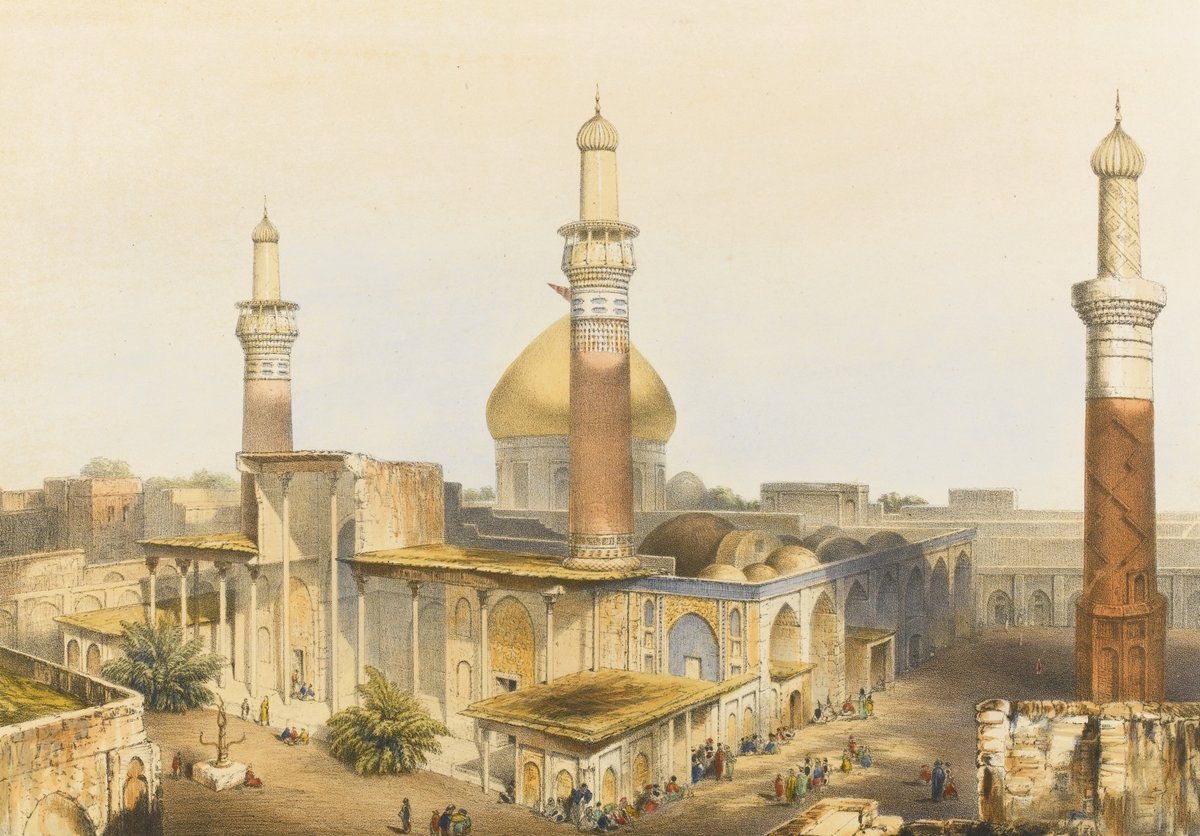Karbala witnessed a new phase of building architecture following its conquest by Shah Ismail a]-Safavi in 914 A. H. (1508 A. D. ). The Safavids made great contributions by building and decorating the holy shrines and the religious buildings and also set up new houses in the city. For this purpose, the most skilful builders and craftsmen were brought to Karbala from all over the Muslim world to make the beautifully coloured enamel tiles (qa. vhani), wood- engraving and brick- building using the local bricks (aýur) which was incorporated in a very skilful way. The Safavids also brought the most precious building materials such as marble, stone, rare woods and other precious materials to be used for the covering and decorating of most of the buildings.
An observation of the architecture of the religious buildings in both Karbala and other holy cities in Iraq would reveal that they have common architectural origins which were known in the buildings built in various periods in both Iraq and Iran. These origins are clearly apparent in structures such as iwan al-Kabeer (the large hall), at-Balni al-Kabeer (the large lobby) which is enclosed in semi circular vaults and al-Eana'al- Makshoof (open courtyard) with a fountain in its centre'.
In his Visit to Karbala in the beginning of 1604 A. D., the well known Portuguese traveller, Peidro Timm, described the buildings of Karbala by saying, "there were more than four thousand houses, many of them well designed in the country fashion, but all of poor construction". He also said "that the city markets (s-ouks) are all well vaulted"'.
In 1765 A. D., the German traveler Carsten Niebuhr also visited Karbala and gave a good description of its buildings. He pointed out that the houses were not of firm construction as it was built of unbaked labiti. He, however, said that the wall of the city was built of sun-dried labin and that this wall had five gates. The city wall thus described is considered the third wall to be built for Karbala'.
As mentioned earlier in chapter 2.5 the buildings in Karbala were badly ruined by the Wahabis when they raided the city in 1801A. D.. The destruction was especially more severe in the holy shrines, mosques, vouks and most of the houses around the two holy shrines of Imam Hussain and al-Abbas. The Wahabis also destroyed the city wall'. Following this raid, one of the Indian kings made the necessary donations for repairing the ruined buildings. In 1802 A. D., the rebuilding work was undertaken by the grand marji' Sayyid Ali
Tabalabai who restored the holy shrines, souks and houses and also built a fortified wall, with towers and bastions. He made six gates in this wall and were named as follows:
1. Bab al-Khan: It is so called because of its proximity to a nearby khati.
2. Bab al-Taq: This is in reference to Taq (arch) Ibrahim alZaTrani, one of Karbala's notable men who rose against the Ottomans.
3. Bab Baghdad: This is the gate through which travelers depart to Baghdad.
4. Bab al-Najaf. This is the gate leading to Najaf.
5. Bab al-Saialma: Named after a nearby place inhabited by the tribe of Salalma.
6. Bab a]-Mukhaiyam (camp gate): This is where Imam Hussain and his followers camped upon their arrival at Karbala'.
Source:
- Holy Shrines of Karbala: By Raouf Mohamed Ali Al-Ansari [p 95-97].

